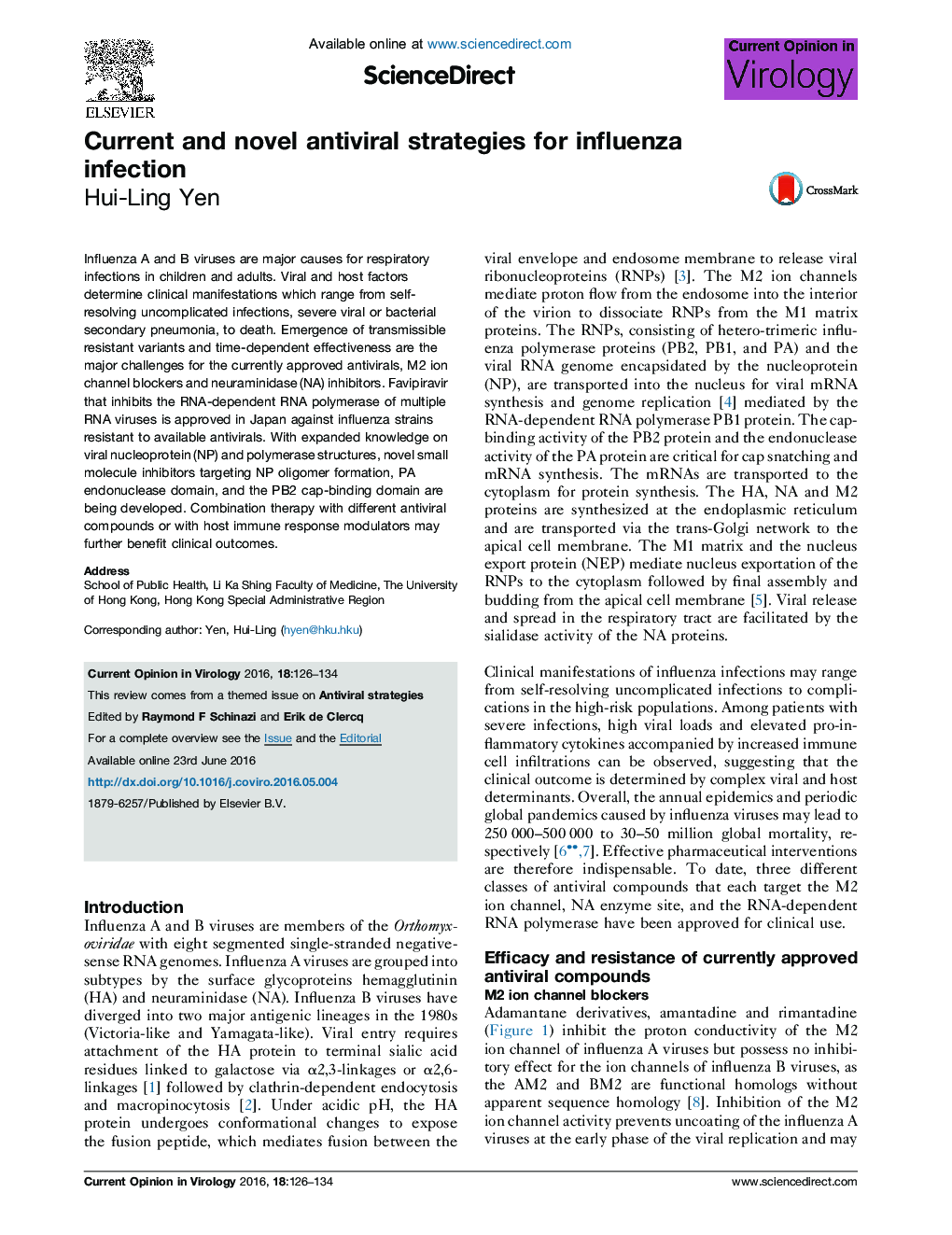| Article ID | Journal | Published Year | Pages | File Type |
|---|---|---|---|---|
| 5806564 | Current Opinion in Virology | 2016 | 9 Pages |
â¢Resistance and timely treatment are challenges for approved influenza antivirals.â¢Structure insights on RNP functional domains aid development of novel inhibitors.â¢Evidence based benefit of combination therapy should be investigated clinically.
Influenza A and B viruses are major causes for respiratory infections in children and adults. Viral and host factors determine clinical manifestations which range from self-resolving uncomplicated infections, severe viral or bacterial secondary pneumonia, to death. Emergence of transmissible resistant variants and time-dependent effectiveness are the major challenges for the currently approved antivirals, M2 ion channel blockers and neuraminidase (NA) inhibitors. Favipiravir that inhibits the RNA-dependent RNA polymerase of multiple RNA viruses is approved in Japan against influenza strains resistant to available antivirals. With expanded knowledge on viral nucleoprotein (NP) and polymerase structures, novel small molecule inhibitors targeting NP oligomer formation, PA endonuclease domain, and the PB2 cap-binding domain are being developed. Combination therapy with different antiviral compounds or with host immune response modulators may further benefit clinical outcomes.
